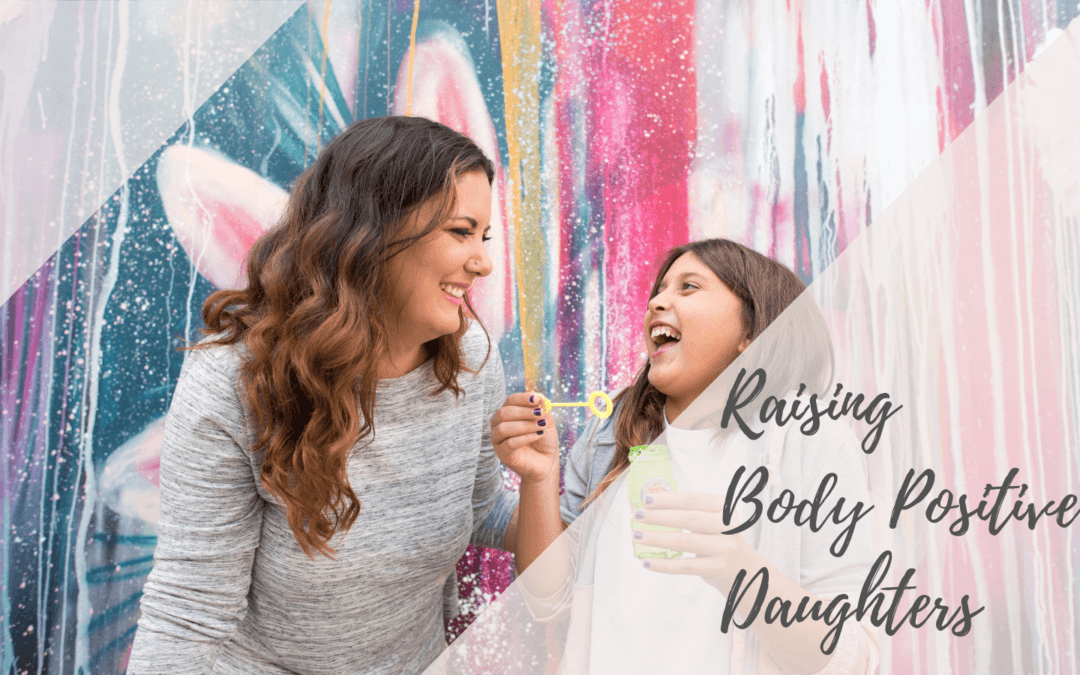I believe there aren’t enough conversations between adults and children on the topics of bodies and food. These conversations are critical to have. If you feel uncomfortable talking about these topics, remember that every day your children are exposed to other con- versations and ideas that may go against your values. Remember, too, that as they age, children go through phases during which they stop listening to their parents and are more influenced by their friends and all media that surrounds them. You can’t control how their friends were raised or the content of the advertisements to which your children are exposed, so it’s better to establish your influence early.
Shame grows in silence, and that’s another reason to have open conversations with your kids. Give them space where they can reach out for help and feel comfortable talking about their bodies. We want to instill that our body is a vessel, the home to our soul, and we need to treat it with the care it deserves.
TOPICS OF CONVERSATION
There is a variety of topics you can and should discuss with your children.
BODY SIZE
We already established that body size is not something anyone can control. Extreme thinness is not a realistic goal for anyone to strive for, particularly not girls who are going through puberty. A child who is told to lose weight and restricts food to do so will find themselves on a cycle of yo-yo dieting once they reach a weight-loss goal and revert to old eating patterns. Balanced eating—never shame-based—is the key.
Instead, teach your children that we are all born with dif- ferent bodies, and these are the bodies we are meant to have. Some children will grow tall, some will be short, and their shapes will vary. At different times during puberty, your children will need extra fat for growth and for girls to get their period, resulting in extra belly fat. We cannot control our height or body shape, and we don’t want to teach our children that they should try to control things that they can’t. What they can control are the food choices that give them more energy and make them feel good. They can make choices about movement, exercise, and sports.
Encourage your children to respect not only diversity beyond culture and backgrounds but also beyond body shapes and sizes. Society may make us feel that having more fat or being a larger size means a person doesn’t eat well or exercise. That assumption is not always true, nor is the opposite. A person who is considered skinny isn’t necessarily healthy or happy. Empower your child to smile, knowing they can choose happy and healthy and to love the body they were born to have.
WORD CHOICES
Examine word choices and what people do and don’t have control over. For example, my son once made a remark about someone being fat. Kids are exposed to that word. When I asked what it meant, my daughter said, “It is an insult, and you shouldn’t say it.” Even at ten, she was taught that the word was negative and mean.
The underlying message with fat being an insult is the assumption that when someone is a bigger size, they are lazy and don’t take care of themselves. Our discussion became about the word fat being an insult. I needed to teach them that a person’s size can be out of their control. Many people take care of themselves but have more fat on their body or a bigger size than the actors we see on television. It is not enough to simply say, “Fat is not a nice word.” The next-level conversation is explaining why it feels like an insult and how we can be part of the change so people can feel more comfortable in their bodies, including us.
SOCIAL MEDIA TRUTHS
Help your children to be media-savvy. As you make your own choices about whom you follow and unfollow on social media, teach your children to do the same. Help them see how advertisers often make people feel bad about themselves in order to sell products. We can’t always control what television and movies children see. Choose options featuring different cultures and body types when you can. More importantly, talk to them about marketing. Just like they learn historical trends in school, they can learn those body ideals are trends that have changed over the years. Knowing every person has a body that will work to maintain the right weight for them helps them see why these trends can make us stressed and unhappy.
There currently exists an unrealistic standard of beauty, but things are changing. Educating our children and having these discussions with them are the first steps. Help them develop a sense of identity and learn to value the things they believe in.
TIPS FOR TALKING
When having these discussions with your children, it’s important that you keep some key points in mind.
WHEN TO HAVE THE CONVERSATIONS
You’ll have times when a discussion on bodies just presents itself, while other times you can decide to bring up a specific topic.
Often, my daughter and I read together at night. I use that time to talk about how I love my arms because I love writing, and I’m grateful I can do that. I ask my daughter what she loves about her body, which leads to a discussion about body parts, how they benefit us, and why we love them. This is part of a quiet time when we reflect on our day.
Grab a FREE Copy of Within: Making Peace With Food and Body Image to Create a Happy, Healthy Home.
I keep books around that feature strong, independent girls and women who have all different types of bodies. Favorite books include:
- Strong Is the New Pretty: Features kids of various ages along with quotes about what they love about themselves.
- Good Night Stories for Rebel Girls: Features bedtime stories about the lives of extraordinary women from the past and the present.
- Listening to My Body: This is perfect for younger children, as it introduces them to the idea of paying attention to their body.
- I Matter (Mindful Mantras): Teaches your children to be mindful of their feelings and the world around them.
DON’T PROJECT
I try to stop assuming I know how my children feel and I try to refrain from establishing rules based on my own childhood. Growing up, I wasn’t allowed to shave my legs until I was in eighth grade. Perhaps I only remem- ber it this way, but it was how I felt. I was embarrassed and hid in the bathroom while changing for gym class because I didn’t want anyone to make fun of my hairy legs. I recently asked my daughter if she had any desire to shave her legs, and she said she loved them as they were. I told her if she changed her mind, I wanted her to let me know. We won’t know the exact moment our kids may struggle or have these worries, so be proactive in discussions and open the door for future conversations
DON’T SHY AWAY
Sometimes kids don’t want to engage in certain conversations, but you still need to have them. Ask open-ended questions, buy them a book to read on their own that you’ve also read, and show them no-judgment conversations are important and safe in your house.
Discussing bodies—our own and others’—normalizes these conversations. Talk to your children about how bodies develop at different times, and that there is no such thing as a perfect body. Ask questions and keep things very casual. Very few parents are comfortable with these topics, but it’s important to try. These discussions can make a big difference. Let’s choose to let the body image issues end with us.
STAY SELF-AWARE
When talking to your children about bodies, it’s important to avoid letting your own fears and issues seep into the conversation. Self-awareness is key. Know that you embarked on this journey to develop a healthy relationship with your body and that it’s a long journey. It’s not a magic pill; it’s a work in progress. You don’t need to be perfect and have a perfectly healthy relationship with food or your body in order to raise a child who has these. Bring them on the journey with you, and let them see that you’re proud to be working on what you’re helping them learn. This is equally as powerful as demonstrating you’ve mastered all you’re trying to teach them.
My daughter looked at a picture of herself as a baby in which she could see the dark circles she still has under her eyes. These are genetic features from both sides of the family. She said, “I guess I’m always going to have these dark circles.” My immediate thought was, Oh my gosh, she feels bad about herself. She doesn’t like the dark circles under her eyes. But then I realized that she hadn’t actually said that. I stopped my internal dialogue and asked her, “What do you think about that?”
She responded, “I love it because when I look in the mirror I see my Abuelita and my Meema. I have their eyes.”
I said, “You’re right. I love that about you.”
When you have conversations with your children, continually check in with yourself. Make sure you’re not injecting fears, emotions, or assumptions into the dialogue. I find the easiest path to keeping yourself out of the talk is to ask your child questions. Ask how they feel. Ask what they think about a given topic. Then continue from there.
KEEP DISCUSSIONS POSITIVE
Many of us grew up in households where our mothers felt negatively about their bodies and continually put themselves down. Our own children watch everything we do. They register when we count calories, skip meals, or make comments about not being able to eat something because we need to lose weight.
When you exercise, do you make comments about it being because you ate so bad yesterday or because you want to go out to eat tonight? Don’t feel guilty; simply be aware of the messages you are sending your children. You may not ever have the perfect body image, but you can’t body bash and then expect your children to exude self-love. You may feel uncomfortable with yourself, but your goal should be to teach your children good lessons and not pass on damaging behavioral patterns.
It takes time, but you can learn to view yourself through a loving lens. Even when it’s uncomfortable, this is a skill we want to teach and instill in our children. Children listen and pay attention, and they repeat the behaviors they observe. Exude positivity even when it doesn’t feel that way inside. Your mind will catch up when you connect more to your body. If you are reading this and your children have already started to repeat your patterns, bring them on the journey with you. Explain that you are going to end the body bashing and want them to join, too.
SMASH THE SCALE
When I worked in the eating disorder clinic, we would have scale-smashing ceremonies to release anger toward how negative body image held someone back. Appearance is concrete: I have brown hair and brown eyes. Body image is how you feel, your attitude toward your body, and how you think others perceive you. If you suffer from negative thoughts or feelings toward your body, I invite you to smash the scale with your children. (For safety reasons, cover the scale with a blanket and grab some goggles, but otherwise, have some fun!) Let the kids join in. When I smashed the scale with my daughter, I explained to her that the scale wasn’t important. Knowing how food and exercise makes me feel is what’s important. When we were done, she said, “I am not skinny. I am not fat. I am Claire.” I was so inspired, I repeated the same: “I am not skinny. I am not fat. I am Karen.”
BE MINDFUL
Be mindful of your body talk. Write down things you say to yourself for a day. Is this an area you need to work on? Do it out loud. Give yourself a compliment out loud. Anytime I give a compliment to one of my kids, I set an intention to also give myself one. Then I ask them to do the same. Part of giving is receiving. They are not separate. You can’t have one without the other. As you work to untangle your self-worth from how your body looks, practice the gift of positive self-talk out loud as well as inside.
After you take a mental note of how you speak to yourself about your body, bring in the awareness of actions you take or don’t take because of negative body image:
- Are you moody if you judge how you ate?
- Do you hide your body when you change?
- Do you avoid wearing a bathing suit without a cover-up?
- Do you ever walk around in your underwear?
- Do you lean into a hug or pull back when someone gets too close?
- Do you avoid shorts or certain clothes because you judge parts of your body?
Just Remember
Getting comfortable with the uncomfortable will go a long way in showing your children how to be comfortable in their own skin. Discussions are important, but actions will deepen the practice and result in change. Look at your body in the mirror and fully take it in without hiding your- self. Give yourself a massage as you put lotion on after a shower. Connecting with your body will allow you to see yourself differently. What we give attention to blossoms, but what we avoid gets weaker. If you begin to avoid taking action or confronting your feelings, return to the letter in the exercise at the end of this chapter. Remember the legacy you want to leave your children and the strength you want them to have for future generations. Let them truly see and feel your worth of yourself so they too can feel worthy.


